- Best Smite Gods For Beginners - February 10, 2023
- Smite x Runescape Crossover - December 26, 2022
- Overwatch 2 Review - October 27, 2022
The item shop in SMITE has nothing short of a complex learning curve. On the one hand, those of you coming from other MOBAs (multiplayer online battle arenas) with item shops, like League of Legends or DoTA, will undoubtedly be able to more speedily get a grip on the slew of items available to buy in SMITE.
On the other hand, those of you coming to SMITE with no MOBA experience (or who only have experience with MOBAs without item shops, like Heroes of the Storm) may find the learning curve much steeper.
Bottom Line Up Front
Allow me to start with some clarification: this article will not examine every individual item. For that, feel free to check out our Smite Items Guide. Rather, this Smite Builds article aims to illustrate the basics of how to properly build the god(s) of your choice, which includes the following:
- A closer look at the various stats (magical power and magical lifesteal, for example) items provide.
- Determining when you should build specific stats over others.
- Situational items.
- When you should build certain relics.
- How the state of the game influences how you should build your items.
- General and conditional stats for each class.
The item system in any MOBA is quite complex and will take some time to learn. While this article cannot cover it all, I hope it can provide you with a solid foundation. After all, every SMITE game you play will be different, and I hope, eventually, the decisions you make around your builds will become second nature.
Before getting into the bulk of the article, I want to lay something out quickly to avoid confusion. When I say “tier 1 item,” I mean the base item in an item tree. Following that logic, if I say tier 2 item, I mean the second item in an item tree, and tier 3 means—you guessed it—the third and (usually) final item in an item tree.
General Rules of Thumb
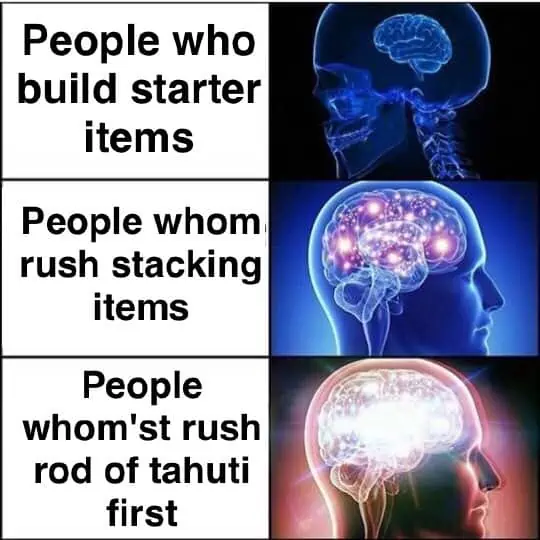
- Always start with your starter item, some health and mana potions (unless you don’t use mana), and whatever tier 1 item (or tier 2 item, depending on what game mode you’re playing) you can afford that suits your build path. The early game is more about surviving in lane than anything else. The longer you’re in lane, the more experience and gold you can soak in, so make sure not to skimp out on buying potions! They are far more valuable in the early game than any tier 1 or 2 items you can buy.
- If you have an item that needs to be stacked (Warlock’s Staff, Devourer’s Gauntlet, Transcendence, etc.) build that right after you pick up your starter item. That way, you can start stacking it as soon as possible. There are some situations where the state of the game won’t let you do that (like if the game’s pace is going way too fast for you to sit back and farm minions for stacks), so if that’s the case, you should hold off on building your stacking item and build something else for a more immediate source of stats.
- Make sure you have 40% cooldown reduction (CDR) built into your final build. There are exceptions, as some gods don’t need 40% CDR to function optimally (as you’ll see later in this article). But, it’s generally a good thing to keep in mind when building your god, for the more often you can use your abilities, the more valuable you’ll be in longer team fights. This is one of the main reasons why Chronos’ Pendant is a staple item for mages, Jotunn’s Wrath for hunters and assassins, and Breastplate of Valor for warriors and guardians, as they are three of the few items that provide 20% CDR.
- Always make sure half your team has an item that reduces enemy healing. With gods that have incredible healing, like Aphrodite, Chang’e, and Yemoja, anti-heals are essential.
- Last but not least…, don’t forget to buy wards, no matter what class or role you’re playing. Yes, even with your free ward slot pre-level 12 (because at level 12 you swap it out for your second relic), it still pays to buy a couple of wards, be them regular or sentry wards, to help you and your team keep track of the enemy as best you can.
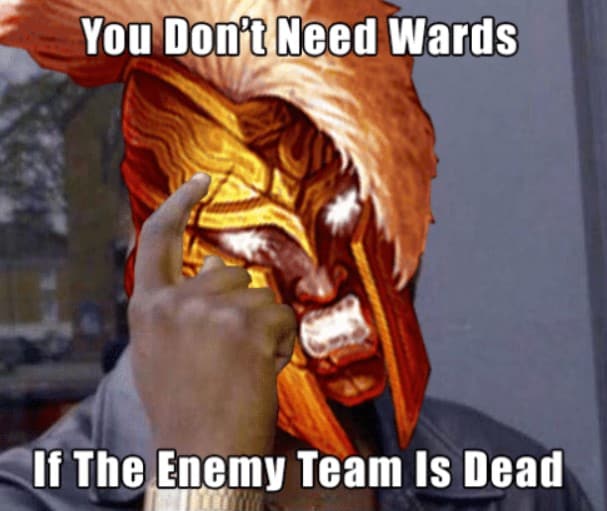
Magical Damage and Physical Damage
In SMITE, there are two main forms of damage: magical and physical. Which one you are (or, rather, the god you’re playing is) dictates the kind of stats you should be building. With that in mind, I’ll be starting with gods that deal magic damage and then move into those that deal physical damage.
Mages
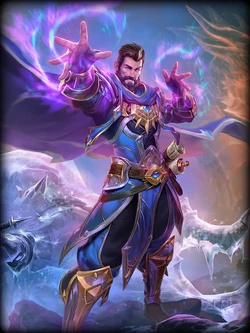
First up is the flashiest class of them all: mage. Mages will always want to go for Magical Power as their primary stat, as all mages do magical damage. Along with this (and CDR, as previously mentioned), there are a couple of other stats you want to consider picking up as a mage:
- Magical Lifesteal: while some gods want more of this than others, having at least one item with Magical Lifesteal will serve you well as a mage. It provides some survivability, and while it won’t necessarily prevent you from getting blown up by an assassin (or literally anyone else), it will help your self-sustain, both in the laning phase and in team fights.
- Magical Penetration: this is a must no matter what kind of mage you’re playing (except, maybe, support mages). The last thing you want is to be barely doing any damage thanks to all the Magical Protections the enemy guardians and warriors stacked against you. Magical Penetration will help you pierce those pesky protections and allow you to hit even tanks like a truck.
- Mana: some mages are more mana-hungry than others (these guys will typically build Book of Thoth first), making building Mana more of a necessity. That said, even if you’re playing a mage that isn’t super mana-hungry, it still pays to have a couple of items that give you Mana, like Soul Reaver.
- MP5 (mana per 5): this simply means “mana you gain every 5 seconds.” So if, for example, you were to build Doom Orb, which (among other stats) gives you +25 MP5, you’d be restoring 25 Mana to your pool every 5 seconds. MP5 isn’t a stat you have to rush, as you can buy a few mana potions to help you sustain through the laning phase instead, but it’s still a great stat to have so that, once again, you can be more effective in longer team fights and reduce the number of times you need to back to base.
Conditional Mage Stats
Aside from the basic stats every mage should have at least a little bit of, there are some other stats to consider, depending on what type of mage you’re playing, so let’s take a look at those.
- Attack Speed: this stat is mainly for mages that rely on their auto-attacks, otherwise known as on-hit mages. These guys usually have an ability or two that empowers their auto-attacks directly, making Attack Speed very necessary for them to dish out some damage. Some examples of these gods are Ao Kuang, Sol, Olorun, Chronos, and, my personal favorite, Poseidon (because who wouldn’t want to surf and auto-attack at the same time?). For magically-based Attack Speed items, the Emerald Ring item tree is your best bet.
- CCR (crowd control reduction): this stat is far more situational than anything else, and I wouldn’t focus your build around it as a mage by any means. Usually, the more support-centered or tanky mages (Baron Samedi or Hades, for example) would build this stat.
- Movement Speed: another situational stat (though not as situational as CCR) is Movement Speed, which is something that all mages can build. But, only a few excel with it. Ra and Poseidon are great examples of gods that thrive with more Movement Speed, as their passives already give them loads of it, but honestly, no mage can go wrong with a little extra movement. Doom Orb and/or Charon’s Coin are great options if you want the Movement Speed but don’t want to sacrifice Magical Power or other essential stats for it.
- Health, HP5 (health per 5), and Protections: certain mages who want to be tanky (yes, I’m looking at you guys, Hades and Zhong Kui) should build some health and protections. If you’re not one of those mages, then there’s no real reason to go out of your way to build those stats unless you really, really need them. That said, some protection and health-granting items are great on a lot of mages, such as Soul Gem and Void Stone, so keep those options open if you need to beef your mage up a little bit.
AP Assassins and Guardians
The former rules for mages generally apply to all gods that utilize Magical Power (otherwise known as Ability Power, or AP), as none of them want to build items that grant Physical Power. So, with all the stats laid out for wielders of Magical Power, let’s take a closer look at how you want to use them to build AP assassins and guardians.
AP Assassins
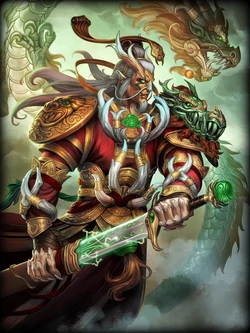
Let me lead with something here: As of the release of Lancelot, all gods in SMITE that are formally classified as assassins are all physical damage-based gods. However, that doesn’t mean there are no assassins that are magic-based as well. You just need to look more closely at the mage category and you’ll find a few.
The most glaring AP assassins are Ao Kuang and The Morrigan, though Hades can be considered one depending on how you build him. Because this is a very small group of gods (and because I’ll go over the general assassin-type builds in the “Assassin” section later on), I’ll be brief. The Morrigan and Hades, if you’re building them as straight assassins, can absolutely go full damage and be built like your typical ranged mage.
Additionally, Ao Kuang can be built like your typical attack-speed-based mage. The tricky thing about assassins though, as I’ll mention again later, is that they generally want to be in melee range of their opponents, meaning they are more vulnerable to getting locked down and killed than their ranged counterparts since they’re voluntarily putting themselves in harm’s way.
With that in mind, it may pay to build one or two bruiser/tank items to ensure you survive long enough to kill one to two enemy gods. Let’s take a look at some one-off defense items that work well for AP assassins (and mages in general).
- Void Stone: one of the more offense options in the defensive item pool as it lowers your enemy’s magical protections while giving you some magical power
- Gem of Isolation: this is good for adding some utility due to the slowing effect it enhances your spells with.
- Warlock’s Staff: this is a very well-rounded item that gives mana, health, magical power, and magical penetration.
- Magi’s Cloak: this one is far more defense-focused because it doesn’t give you any stats related to magical power/penetration or mana.
These are not all the viable items for mages and AP assassins that provide some defensive stats items (they also work great for guardians if you’re not going straight tank, as you’ll see next), but some great options.
Guardians
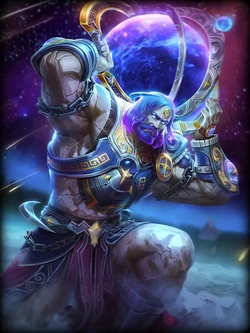
All of the gods that are formally classified as guardians in SMITE are magic-based, and there are three main ways to build any guardian:
- Straight tank.
- Straight damage.
- Hybrid.
Let me just say that hybrid build paths are the most ineffective way to build them. It’s like being a jack of all trades and a master of none. I say this because if you build a guardian with a hybrid build path, you won’t be doing enough damage to kill an enemy backliner, and you won’t be tanky enough to sustain the damage from an enemy backliner. In total, while you can survive some damage, they’ll kill you long before you have the chance to kill them due to your lack of burst damage.
To be clear, building one or two of bruiser items (some of which I listed in the AP assassin section) doesn’t necessarily mean you’re building a hybrid build. A true hybrid build is more evenly split down the middle in terms of damage and tank capacity.
That means you’ll probably build one to two damage items, two or three bruiser items, and two or three tank items. This is something warriors excel at (to be elaborated on later), but guardians…, not quite.
With that in mind, let’s look at the other two options.
Straight damage guardians
Building a guardian like you would a mage would turn you into an AP assassin, so if you go this route, it pays to think of yourself as an AP assassin instead of a guardian. Some guardians can pull this off better than others by virtue of their kit, and some of those gods are the following:
- Atlas
- Bacchus
- Cerberus
- Cabrakan
- Ganesha
- Sylvanus
Bacchus is probably the most popular guardian to build straight damage on, but the rest on this list are also quite strong when built this way too. Don’t get me wrong; doing this is fun, as there’s nothing better than one-shotting an unsuspecting enemy, but unless your team drafts around this kind of playstyle, it may not end well in competitive play. Regardless, if you enjoy guardians and want a breath of fresh air, give straight damage a try.
Anyway, here’s a full Conquest game of a full damage Bacchus in the solo lane. It is explosive, you have been warned.
Straight tank guardians
This is the traditional way to build guardians, as big, beefy, peeling machines for your backliners to keep them safe. To get the basics out of the way, these are your primary stats:
- Health
- Magical Protections
- Physical Protections
- HP5
- CDR
Concerning the last stat on that list, you always, always want to be maxed out at 40% CDR, and I’ve found combining Pridwen and Breastplate of Valor to be the best way to get you there, as both items give you 20% CDR.
This allows you to invest more gold into more primary stats like Health and Protections, but this is by no means the only way to get to 40% CDR. There are plenty of other great tank items that only give 10% CDR too, like Shogun’s Kusari and Mantle of Discord.
Additionally, there’s a new item—Sphinx’s Bauble—that increases your CDR cap to a whopping 60% instead of 40% (this item is part of the Mystical Earring tree). The catch is that your damage and healing output is decreased by 20%, but honestly, who cares? If you’re building straight tank your damage is irrelevant; what matters is your ability to spam your abilities to lock down enemies and peel for your allies, so the trade-off is well worth it.
However, the 20% decrease to your healing output can be a bit more concerning if you’re playing a god who relies on healing, namely Yemoja. Sylvanus and Terra are also gods you may want to reconsider building Sphinx’s Bauble on, but ultimately, the decision is yours.
If it were up to me, I wouldn’t build it on these three gods unless I had a hard-healing support on my team like Aphrodite. If that’s the case, I’d feel more comfortable sacrificing 20% of my healing output because I’d know my Aphrodite (or other healing support) would pick up my slack.
Physical Damage Gods
With the magic-damage wielders out of the way, let’s look at SMITE’s physical-damage wielders. I’m going to move in the same order as I did with the former, so let’s hop right into it.
Hunters
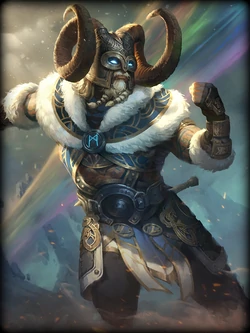
First up is the ranged, physical damage dealing class: hunters (otherwise known as ADCs, or attack-damage carries). Unlike mages who will build Magical Power as their primary stat, hunters will want to pick up Physical Power as theirs. But, along with Physical Power, there are a couple of other stats you want to consider picking up as a hunter:
- Attack Speed: depending on how you build your hunter, this is the most important stat for hunters outside of Physical Power because it allows you to auto-attack more, and it’s as simple as that. However, some hunters don’t need that much Attack Speed if you’re building them around their abilities, in which case you’d want to focus more on other stats because you’re not relying on your auto-attacks as your chief source of damage. Some examples of hunters that can do well with an ability-focused build (as opposed to an auto-attack-focused build) are Heimdallr and Hou Yi.
- Physical Penetration: this is a must no matter what kind of hunter you’re playing, for the same reason you want to build Magical Penetration on mages and AP assassins. The last thing you want is to barely be doing any damage, thanks to all the Physical Protections stacked against you. Physical Penetration will allow you to shred through everyone, including guardians and warriors, so you want to have at least one item that provides this stat if not two or three items. It’s always a sad day as a hunter when your auto-attacks deal little to negative damage to tanks.
- Lifesteal: this stat is a bit more important on hunters than it is on most mages, only because auto-attacks are more consistent than abilities, meaning you gain more value from the Lifesteal because you’re doing more consistent damage. Other than that, both of these ranged classes are in similar situations: having at least one item with Lifesteal is typically desired by hunters due to the survivability it provides. Devourer’s Gauntlet is a great option here, but I usually prefer Atalanta’s Bow or Asi for my Lifesteal because these items also give Attack Speed.
- Crit Chance: this stat is only if you’re going with a Crit/Attack Speed-based build. Granted, you can still build some Crit Chance even if you’re not focusing on getting it up to 60%-100%, but this stat is better the more of it you have, so just bear that in mind.
Conditional Hunter Stats
There are more stats open to you as a hunter other than those already listed, but they’re mostly the same as mages, so I’ll be brief. CCR, Movement Speed, Health, HP5, and Protections are all conditional stats depending on the state of the game. However, I do want to include three more stats in particular that are slightly less conditional than their defensive alternatives: CDR, Mana, and MP5.
As mentioned in the Attack Speed portion of the former section, some hunters can choose to be ability-focused with their build instead of auto-attack-focused. As such, those hunters can get quite mana-hungry early on in the game, so it pays to build some Mana and/or MP5. Even if you’re building your hunter for auto-attacks, if they’re still mana-hungry, building at least one Mana-based item is worthwhile. Transcendence, Heartseeker, and Jotunn’s Wrath are great options here.
Regarding CDR, if your hunter is ability-focused, having 40% CDR is essential for the same reason as it is on mages; you want to be able to cast those abilities as often as you can. In that case, Jotunn’s Wrath is a must-buy, while you can get the other 20% pretty easily through other items like Hydra’s Lament and/or Soul Eater.
Assassins
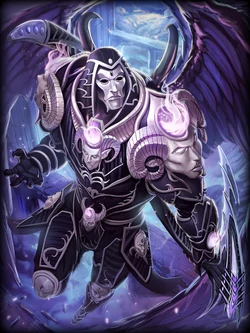
All the gods formally labeled as assassins are physical-damage based, and these guys follow very similar build paths to their ranged counterparts, hunters. You can build assassins so that their main damage is focused around their abilities, or you can build them so that their main damage is focused around their auto-attacks, though the latter will usually require a lot of Crit Chance to make those auto-attacks more explosive and assassin-like.
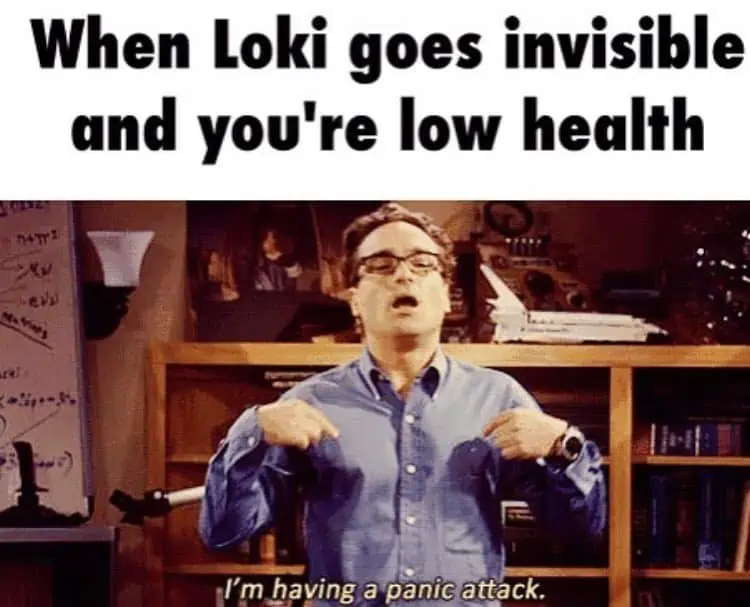
As with hunters, if you’re building around your abilities, you’re going to want some Mana, MP5, and CDR.
As with AP assassins, building some defensive stats is also perfectly viable to increase the odds you survive when you dive the enemy backline. With that said, let’s look at some one-off defense items that work well for assassins (and even hunters).
- Void Shield: one of the more offensive items in the defensive item pool, as it reduces the Physical Protections of enemies around you, and gives you some health and Physical Protections.
- Cudgel: this is a tier 1 item, but all four of the tier 3 hammer items this base item can build into are great. Even though none of them provide you with any protections, the Health they offer, along with their passive effects, are what truly make them shine as bruiser items. They are the following:
- Frostbound Hammer
- Runeforged Hammer
- The Sledge
- Blackthorn Hammer
- Magi’s Cloak: for the same reason this item is great for any other damage-based class, as mentioned in the AP assassin section.
Warriors
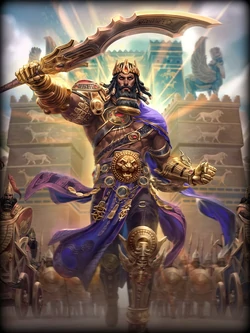
Finally, it’s safe to have a well-rounded build for warriors. So, unless you’re testing some things out (otherwise known as trolling by some), like going full damage and acting like you’re playing an assassin (yes, it’s fun), you should have a healthy balance of damage items and tanky items.
However, warriors are already meant to do a decent amount of damage, so building mostly damage items while playing one isn’t as outrageous as building full damage on a guardian. As long as you’re not building any Magical Power or any stat related to Magical Power, you’re totally fine.
Either way, due to how flexible the warrior class is, putting out a general build path is tough, as your build should always be reactive to the state of the game. A couple of examples:
- If the enemy team has three frontliners (guardians/warriors), it may pay to build fewer damage items and more tanky ones so that you can last in the fight for a longer time.
- If the enemy team has only one frontliner, it may pay to build more damage, as you’ll have easier access to their backline, allowing you to kill them faster.
Some warriors are better with auto-attack builds than others (like Bellona and Osiris), some are better with ability-focused builds (like Chaac and Odin), and some are naturally tanky thanks to their kits, allowing you to favor more damage-based items in your build (like Hercules and Vamana). When playing warriors, there’s nothing wrong with initially following a build guide or two, but eventually, you’ll need to learn how and when to stray from said guides to build your warrior-god in the most effective way possible.
Knowing When to Stray from a Build Path
This section is probably the most important one. You can make or break your game if you can adapt your build to effectively deal with your enemies’ strengths and exploit their weaknesses.
There are many build guides out there for every god, but you shouldn’t be following one of their main build paths to a T every game. SMITE, like all other MoBAs, is a dynamic game, and remaining stagnant by sticking to the same build every time is not always the best way to go. Let’s look at some examples.
Example 1
If you see your enemy team is full of magic damage dealers, and the main build of the guide you’re following has you building a physical protection item, disregard that entirely and instead build some magical protections.
Even if you’re a backliner, this could be a smart idea, especially if it’s a bruiser item like Void Stone for magic damage dealers or Runic Shield for physical damage dealers. These are perfect in a situation like this because they still give you damage stats while providing some Health and Magical Protections. After all, what’s the point of building physical protections if your enemies don’t do any physical damage?
Example 2
If you’re playing a backliner (mage or hunter, it doesn’t matter which), and you notice that the enemy guardian and warrior are diving you every single team fight, you should probably swap out a damage item for a more defensive one.
“But what if I don’t do enough damage because I’m sacrificing some of it for defensive stats?” you might find yourself asking.
Think about it this way: if you’re dead, you’re doing zero damage. So, if you need to sacrifice some damage for some defense, it’ll help you survive longer and stay in the fight longer. And that, in turn, will let you do more damage than if you were dead.
Example 3
Say you’re playing a warrior in the Solo Lane and you find yourself ridiculously behind. The enemy jungler ganked you five times in the first ten minutes of the game and you’re being shoved under your tower and starved of experience and gold. Now, let’s imagine you’ve got a (hypothetical) build guide pulled up that wants you to build a pure damage item in your first slot, say, Jotunn’s Wrath. Should you follow the guide and build it first?
In the given situation, I’d say no. Now let me explain why.
Considering how far behind you are, by the time you finish building your Jotunn’s Wrath, your enemy will be one to two items ahead of you already. Thus, the damage you got from the Jotunn’s Wrath is negligible because your enemy will kill you just as quickly as they would if you didn’t have the item.
On top of that, you won’t be able to kill them (unless they intentionally feed or you truly outclass them exquisitely) because of the sheer power difference due to their item advantage. So the solution here is to build a tanky item first.
Why?
Because it will allow you to survive longer, and that’s what you need to focus on doing. If you can, you can soak up more experience and gold. Plus, if you’re that behind, you are no longer the win condition, so you should probably play around whichever one of your allies is ahead (hopefully, at least one is). And that means being a meat shield for them.
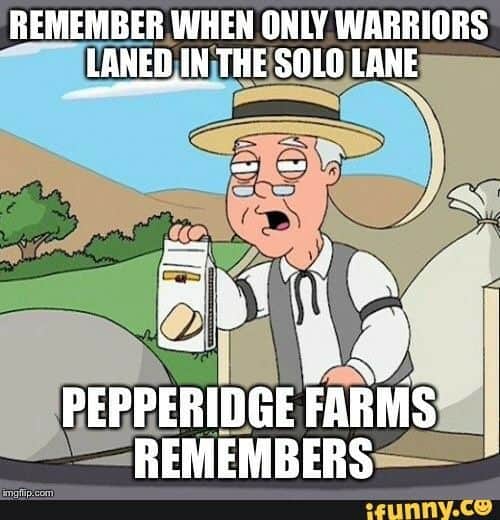
When to Buy What Relics
As the title of this section states, I want to spend some time on relics. These are the most crucial items in the game because once you buy them and leave your base, you can’t trade them out for another relic. Therefore, your choices are permanent for the duration of the game you’re playing. So let’s break it down by class.
Mages and Hunters
When it comes to backliners, Aegis Amulet and Purification Beads is usually the best combo of relics for them. Backliners always need to stay on their toes and be ready to react to enemy divers (warriors, assassins, guardians), and these two relics provide some incredible defensive options that can even remove the need to build defensive items.
You don’t need to think much about your choice of relic as a mage or hunter, and while there are exceptions, Aegis Amulet and Purification Beads are generally the way to go.
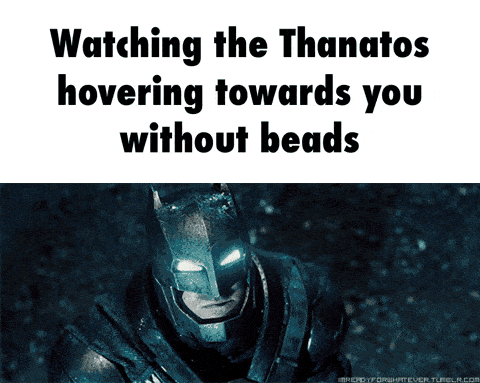
If you want to be more aggressive, Blink Rune and Heavenly Wings are great options too, since they can also be used defensively in case you get into a sticky situation.
Assassins
Assassins can go either way with their relics; it depends on your play style and the enemy team. Aegis Amulet and/or Purification Beads are, generally speaking, excellent options for assassins due to how vulnerable they are to being locked down and blown up due to their squishiness.
But if we’re talking about more offensive options, Blink Rune and Horrific Emblem are perfect for helping you close in on your prey and preventing them from running too far away. Cursed Ankh and Belt of Frenzy are also great simply for the sheer amount of damage they provide (though the former’s damage boost is a bit more situational).
While you can double down on either defensive or offensive relics, taking one of each is a great general rule to follow (if you go with this, I value Purification Beads over Aegis Amulet more often than not as a defensive option). But, again, just keep a close eye on the enemy team and the state of the game before making your decisions.
Also, if you’re playing an assassin but building them like a bruiser, you should pick your relics as if you were a warrior. And speaking of warriors…
Warriors
Warriors can be the most flexible with their relics, as they can go any way they want. Typically, just pick the relics that give you what your kit and item build are lacking and you should be fine. So, if you’re getting locked down and blown up every time you engage the enemy team, grab Purification Beads.
If the enemy backliners are constantly slipping away from under you every time you engage with them, pick up Blink Rune, Heavenly Wings, and/or Horrific Emblem. If you find yourself as the primary frontliner for your team and you’re building a lot of tanky stats, pick up Shield of Thorns.
Guardians
Guardians will usually want to opt for the more support-oriented relics (unless you’re going straight damage, in which case you should be choosing your relics as if you were an assassin).
Cloak of Meditation, Magic Shell, Belt of Frenzy, Heavenly Wings, and Bracer of Radiance are all great choices as they all buff all your teammates near you, instead of just buffing you (the same logic can be applied to mage-supports when choosing relics for them). Horrific Emblem and Blink Rune are great too if you’re more worried about chasing down enemies than peeling your allies. Lastly, Shield of Thorns is likely the best selfish pick you can make.
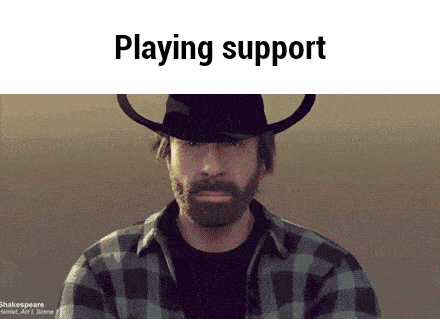
All in all, when picking which relics you want as a guardian, the main three questions you should be asking yourself are the following:
- Do I need to help my backliners survive a team fight?
- Do I need to help my allied divers chase and kill the enemy backliners?
- Do I need to worry about keeping myself alive in a team fight?
Once you’ve figured out your answers, the relics you want to take should be easy choices.
Relics: Specific Circumstances
There are two things I want to note regarding relics:
- First, if you’re a Solo Laner in the Conquest game mode, Teleport Fragment is strongly encouraged.
- Secondly, in the Assault game mode, it’s considered good-mannered to pick up Cloak of Meditation as your first relic no matter what class you’re playing. Doing this will allow you and your teammates to sustain longer, which allows for more experience and gold to be soaked.
FAQs
Question: Is 40% CDR absolutely necessary for every god?
Answer: most of the time, I would say yes. Being able to cast your abilities more often is crucial to gods whose chief source of dealing damage comes from their abilities.
However, building 40% CDR is much less essential for gods whose primary source of dealing damage comes from auto-attacks (this goes for both AD and AP gods). That doesn’t mean you shouldn’t build 40%, but rather, if you want to get an item that provides you with more raw damage instead of CDR, it’s not the end of the world since most of your damage comes from auto-attacks, not abilities.
Question: Do you always have to start with a starter item?
Answer: most of the time, this is the way to go. Starter items generally have more bang for their buck. They provide the most stats compared to other items (usually tier 1 items) of similar cost. With that in mind, starting with starter items is the most economical choice.
Question: Do you have to keep your upgraded starter item at full build?
Answer: this one depends on which starter item you’re using. I would say that more often than not, the special effect(s) of your upgraded starter item is something you don’t want to pass up. However, there are certain ones that you can sell and pick up another item for better/different stats or effects.
Usually, this occurs with starter items with an effect that has a long cooldown. For example, The Alternate Timeline (one of the upgrade options from Sands of Time), which revives you upon taking fatal damage, has a 6-minute cooldown before it can proc again. So, if you’ve got the gold to spare, you can sell this item after its effect procs and get another item instead of it.
Question: Is going full damage on Guardians viable?
Answer: in casual play, yes. Competitive play, less so, unless you’re a one-trick pony and can pull it off well.
Ultimate Guide to Smite Builds: Conclusion
Being one of the most crucial aspects of SMITE, building your god correctly is no easy thing to do. That’s one of the reasons SMITE has an auto-build feature, to take the pressure off of you while you’re still getting used to how the rest of the game works. But, this feature will only get you so far, as you will eventually need to learn how to build your gods if you intend to play the game at a remotely competitive level.
Thus, I hope this extensive (yet remarkably brief) guide helped stir the juices up in your brain and started to get you thinking of some ideas for how to build your favorite god(s).
